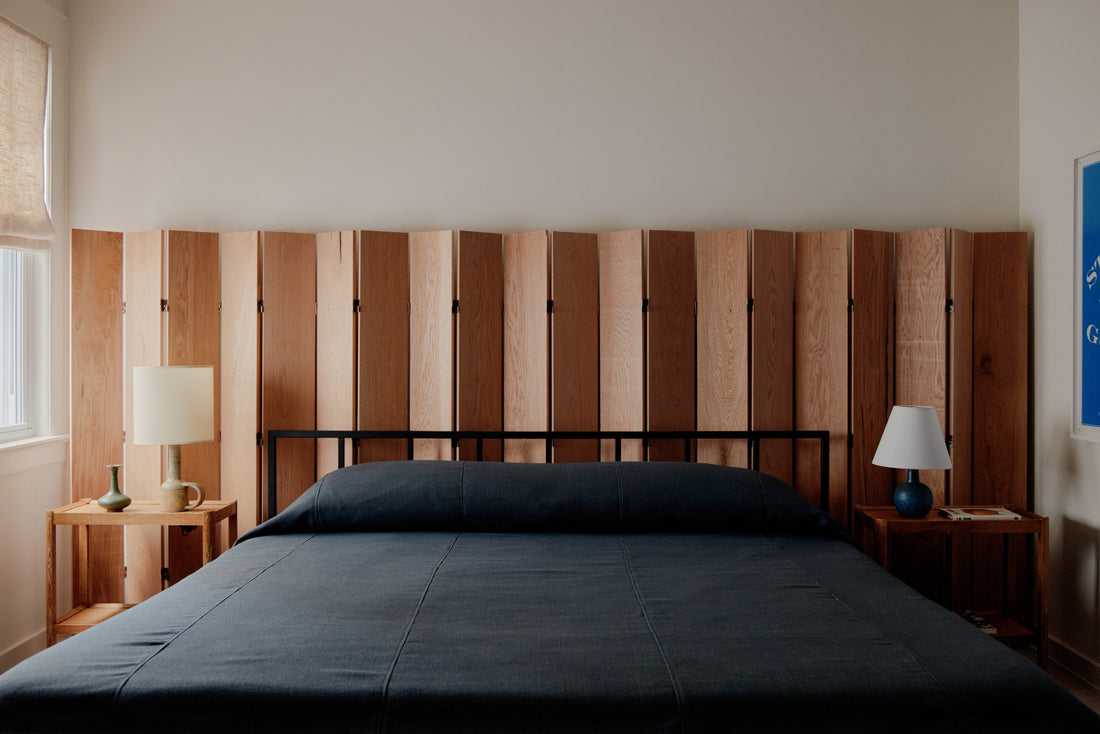
Interior Design Dos and Don'ts: Crafting Your Perfect Space
Interior design is a delicate art that can transform any space into a harmonious blend of functionality and aesthetics. Whether you're decorating a new home, renovating an existing one, or simply seeking to refresh your living environment, understanding the dos and don'ts of interior design is essential. In this comprehensive guide, we will explore the key principles, trends, and pitfalls to avoid when embarking on your interior design journey. From harnessing color psychology to maximizing space and avoiding common mistakes, you'll gain valuable insights to help you create the home of your dreams.
**Dos:**
1. **Do Set a Clear Vision and Budget:**
Before diving into any interior design project, define your goals and set a budget. Having a clear vision helps you stay focused and make informed decisions about where to allocate your resources.
2. **Do Prioritize Functionality:**
Functionality should always come first. Ensure that the layout, furniture, and decor enhance the usability of your space. Consider the needs of your household, such as storage, seating, and traffic flow.
3. **Do Embrace Natural Light:**
Maximize natural light whenever possible. It not only brightens up your space but also has a positive impact on your well-being. Use light-colored window treatments that allow sunlight to filter through while maintaining privacy.
4. **Do Invest in Quality Basics:**
When it comes to foundational pieces like sofas, beds, and dining tables, invest in quality. These pieces will withstand the test of time and serve as a canvas for changing decor elements.
5. **Do Mix and Match Styles:**
Experiment with mixing different design styles to create a unique and personalized look. Eclectic interiors often combine traditional, modern, and vintage elements for an intriguing aesthetic.
6. **Do Pay Attention to Scale and Proportion:**
Ensure that furniture and decor items are proportionate to the size of the room. Avoid overwhelming small spaces with oversized furniture or making large rooms feel empty with tiny pieces.
7. **Do Experiment with Color:**
Color can greatly influence the mood of a room. Experiment with different color palettes, but remember to balance bold and neutral shades for a cohesive look. Consider the principles of color psychology when selecting hues.
8. **Do Layer Lighting:**
Create ambiance and functionality by layering lighting. Incorporate ambient, task, and accent lighting to illuminate different areas of the room. Dimmer switches provide flexibility and can set the mood.
9. **Do Showcase Personal Style:**
Your home is a reflection of your personality. Incorporate personal touches like family photos, artwork, or heirlooms to infuse your space with character and warmth.
10. **Do Plan for Adequate Storage:**
Clutter can disrupt the flow of your interior design. Plan for ample storage solutions to keep your space organized and uncluttered. Built-in cabinets, shelving, and multifunctional furniture can help.
**Don'ts:**
1. **Don't Rush the Process:**
Interior design is a journey, not a race. Avoid making hasty decisions, and take the time to research, plan, and visualize your design concept thoroughly.
2. **Don't Overcrowd Your Space:**
Less is often more in interior design. Resist the urge to overcrowd your rooms with excessive furniture and decor. Each piece should have a purpose and contribute to the overall design.
3. **Don't Ignore the Flow of Traffic:**
Ensure that there is a clear and unobstructed flow of traffic within your space. Avoid arranging furniture in a way that forces people to navigate awkwardly around obstacles.
4. **Don't Neglect Proper Lighting:**
Inadequate or poorly placed lighting can hinder the functionality and ambiance of a room. Don't rely solely on overhead lighting; incorporate task and ambient lighting to create a balanced atmosphere.
5. **Don't Forget About Maintenance:**
While beautiful, high-maintenance materials and furnishings may not be suitable for busy households. Consider the ease of cleaning and upkeep when selecting materials for your space.
6. **Don't Overlook Scale:**
Furniture that is too large or too small for a room can disrupt its balance. Always measure your space and the intended furniture to ensure they complement each other.
7. **Don't Cling to Trends Unwaveringly:**
While it's fun to incorporate trendy elements, avoid going overboard. Trends come and go, so invest in timeless pieces and use trends as accents that can be easily replaced.
8. **Don't Skimp on Comfort:**
Aesthetics should not compromise comfort. Ensure that seating and other furniture pieces are as comfortable as they are stylish. Your home should be inviting and relaxing.
9. **Don't Ignore the Ceiling:**
Ceilings are often overlooked but offer a canvas for creativity. Consider incorporating decorative elements like molding, beams, or paint to add visual interest to your space.
10. **Don't Be Afraid to Seek Professional Help:**
If you're uncertain about design decisions or tackling a complex project, don't hesitate to consult with a professional interior designer. They can provide expertise and guidance to achieve your vision.
Conclusion:
Interior design is a dynamic and rewarding pursuit, guided by a set of dos and don'ts that ensure your space is both visually captivating and functionally sound. By adhering to these principles, you can embark on your interior design journey with confidence, knowing that your efforts will result in a harmonious and inviting home that reflects your unique style and meets your practical needs. Remember that your home is a canvas, and with the right approach, you can craft a space that truly feels like your own.
**Dos:**
1. **Do Set a Clear Vision and Budget:**
Before diving into any interior design project, define your goals and set a budget. Having a clear vision helps you stay focused and make informed decisions about where to allocate your resources.
2. **Do Prioritize Functionality:**
Functionality should always come first. Ensure that the layout, furniture, and decor enhance the usability of your space. Consider the needs of your household, such as storage, seating, and traffic flow.
3. **Do Embrace Natural Light:**
Maximize natural light whenever possible. It not only brightens up your space but also has a positive impact on your well-being. Use light-colored window treatments that allow sunlight to filter through while maintaining privacy.
4. **Do Invest in Quality Basics:**
When it comes to foundational pieces like sofas, beds, and dining tables, invest in quality. These pieces will withstand the test of time and serve as a canvas for changing decor elements.
5. **Do Mix and Match Styles:**
Experiment with mixing different design styles to create a unique and personalized look. Eclectic interiors often combine traditional, modern, and vintage elements for an intriguing aesthetic.
6. **Do Pay Attention to Scale and Proportion:**
Ensure that furniture and decor items are proportionate to the size of the room. Avoid overwhelming small spaces with oversized furniture or making large rooms feel empty with tiny pieces.
7. **Do Experiment with Color:**
Color can greatly influence the mood of a room. Experiment with different color palettes, but remember to balance bold and neutral shades for a cohesive look. Consider the principles of color psychology when selecting hues.
8. **Do Layer Lighting:**
Create ambiance and functionality by layering lighting. Incorporate ambient, task, and accent lighting to illuminate different areas of the room. Dimmer switches provide flexibility and can set the mood.
9. **Do Showcase Personal Style:**
Your home is a reflection of your personality. Incorporate personal touches like family photos, artwork, or heirlooms to infuse your space with character and warmth.
10. **Do Plan for Adequate Storage:**
Clutter can disrupt the flow of your interior design. Plan for ample storage solutions to keep your space organized and uncluttered. Built-in cabinets, shelving, and multifunctional furniture can help.
**Don'ts:**
1. **Don't Rush the Process:**
Interior design is a journey, not a race. Avoid making hasty decisions, and take the time to research, plan, and visualize your design concept thoroughly.
2. **Don't Overcrowd Your Space:**
Less is often more in interior design. Resist the urge to overcrowd your rooms with excessive furniture and decor. Each piece should have a purpose and contribute to the overall design.
3. **Don't Ignore the Flow of Traffic:**
Ensure that there is a clear and unobstructed flow of traffic within your space. Avoid arranging furniture in a way that forces people to navigate awkwardly around obstacles.
4. **Don't Neglect Proper Lighting:**
Inadequate or poorly placed lighting can hinder the functionality and ambiance of a room. Don't rely solely on overhead lighting; incorporate task and ambient lighting to create a balanced atmosphere.
5. **Don't Forget About Maintenance:**
While beautiful, high-maintenance materials and furnishings may not be suitable for busy households. Consider the ease of cleaning and upkeep when selecting materials for your space.
6. **Don't Overlook Scale:**
Furniture that is too large or too small for a room can disrupt its balance. Always measure your space and the intended furniture to ensure they complement each other.
7. **Don't Cling to Trends Unwaveringly:**
While it's fun to incorporate trendy elements, avoid going overboard. Trends come and go, so invest in timeless pieces and use trends as accents that can be easily replaced.
8. **Don't Skimp on Comfort:**
Aesthetics should not compromise comfort. Ensure that seating and other furniture pieces are as comfortable as they are stylish. Your home should be inviting and relaxing.
9. **Don't Ignore the Ceiling:**
Ceilings are often overlooked but offer a canvas for creativity. Consider incorporating decorative elements like molding, beams, or paint to add visual interest to your space.
10. **Don't Be Afraid to Seek Professional Help:**
If you're uncertain about design decisions or tackling a complex project, don't hesitate to consult with a professional interior designer. They can provide expertise and guidance to achieve your vision.
Conclusion:
Interior design is a dynamic and rewarding pursuit, guided by a set of dos and don'ts that ensure your space is both visually captivating and functionally sound. By adhering to these principles, you can embark on your interior design journey with confidence, knowing that your efforts will result in a harmonious and inviting home that reflects your unique style and meets your practical needs. Remember that your home is a canvas, and with the right approach, you can craft a space that truly feels like your own.
